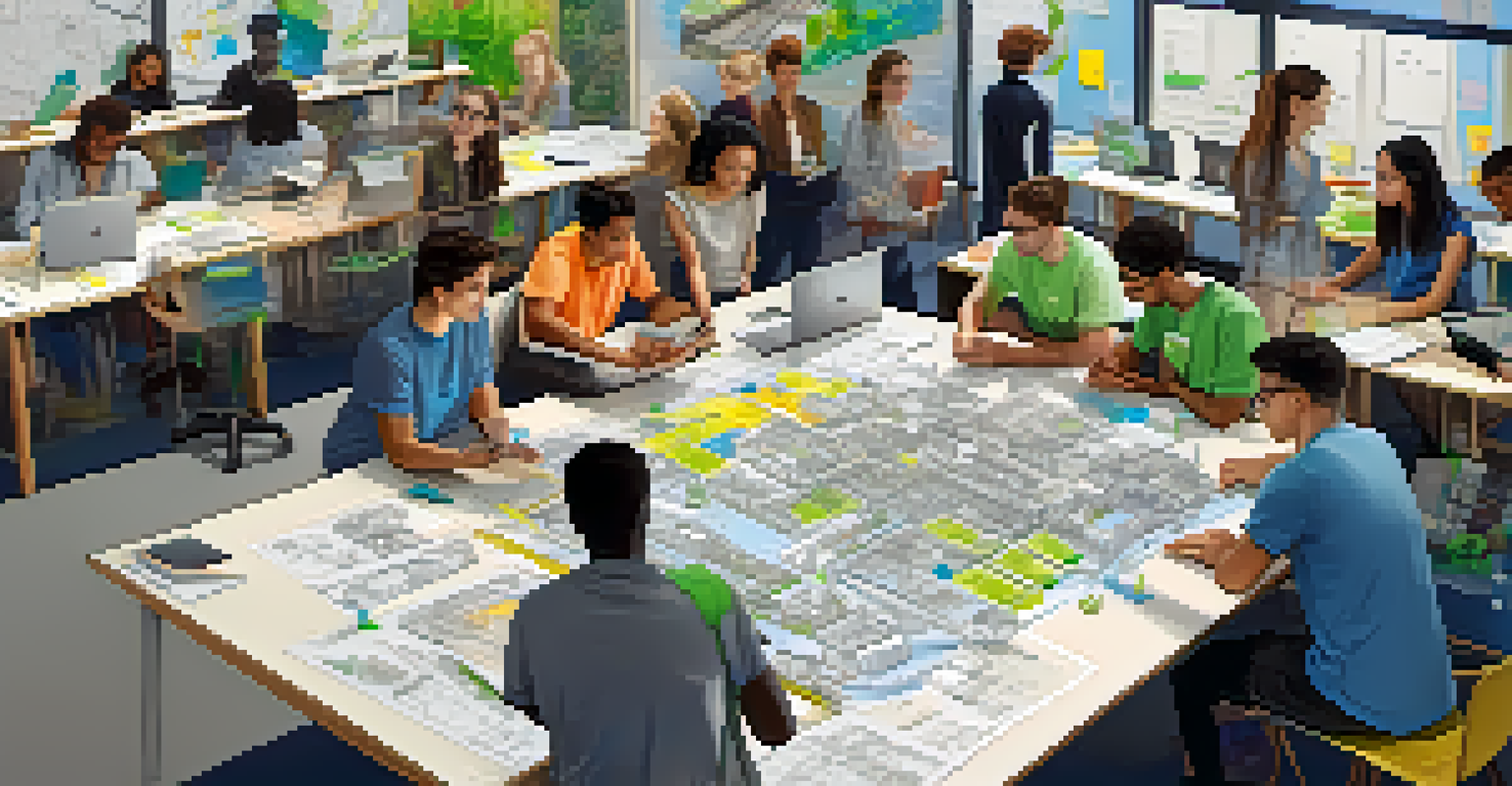Creating Pathways That Encourage Critical Thinking Skills

Understanding the Importance of Critical Thinking Skills
Critical thinking skills are essential in today’s fast-paced world. They enable individuals to analyze information, evaluate different perspectives, and make informed decisions. In educational settings, these skills empower students to engage deeply with content and become proactive learners rather than passive recipients of information.
Critical thinking is the key to creative problem solving in business.
When students think critically, they are better equipped to solve problems and navigate challenges both in and out of the classroom. This skill set is not just beneficial for academic success; it prepares students for real-world situations where analytical thinking is key. For instance, a student who evaluates news sources critically can discern credible information from misinformation.
Moreover, fostering critical thinking promotes creativity and innovation. When learners are encouraged to question assumptions and explore diverse viewpoints, they develop the ability to think outside the box. This mindset not only enhances their learning experience but also prepares them for future careers in a complex, interconnected world.
Creating a Safe Space for Open Dialogue
One of the most effective ways to encourage critical thinking is by establishing a safe space for open dialogue in the classroom. When students feel comfortable sharing their thoughts without fear of judgment, they are more likely to engage in meaningful discussions. This openness can lead to richer conversations where different ideas are explored and challenged.

For instance, using techniques like Socratic questioning can stimulate deeper thinking. Teachers can ask probing questions that encourage students to articulate their reasoning and reflect on their answers. This not only sharpens their critical thinking skills but also builds their confidence in expressing their opinions.
Critical Thinking is Essential
Critical thinking skills empower individuals to analyze information, solve problems, and make informed decisions in various aspects of life.
Additionally, fostering a culture of respect is crucial. When students are taught to listen actively and appreciate diverse viewpoints, they are more inclined to engage in constructive debates. This collaborative environment nurtures critical thinking by allowing students to learn from one another and consider perspectives they might not have otherwise encountered.
Incorporating Problem-Based Learning Activities
Problem-based learning (PBL) is a dynamic approach that can significantly enhance critical thinking skills. In PBL, students tackle real-world problems, which requires them to apply their knowledge and think critically to find solutions. This hands-on experience not only makes learning more engaging but also instills a sense of ownership over their education.
The greatest danger in times of turbulence is not the turbulence; it is to act with yesterday's logic.
For example, a PBL scenario might involve students working in groups to design a sustainable city. They would need to research various aspects—like environmental impact, urban planning, and social factors—while discussing and debating their ideas. This collaborative effort cultivates critical thinking as students analyze information, weigh options, and make collective decisions.
Moreover, PBL encourages persistence and resilience, traits that are vital for effective critical thinking. When faced with challenges, students learn to adapt their approaches and explore alternate solutions. This process of trial and error helps reinforce their analytical skills and prepares them for future problem-solving situations.
Utilizing Technology to Enhance Critical Thinking
In our digital age, technology serves as a powerful tool to foster critical thinking skills. Online platforms and educational apps provide engaging resources that can challenge students to think critically. For instance, interactive simulations allow students to experiment with different variables and see the outcomes of their decisions in real-time.
Moreover, technology facilitates access to a wealth of information, enabling students to research and analyze topics more comprehensively. They can collaborate with peers from around the world, share insights, and engage in discussions that broaden their perspectives. This exposure to diverse viewpoints is crucial for developing critical thinking.
Safe Spaces Enhance Dialogue
Creating a safe environment for open dialogue encourages students to engage in meaningful discussions, fostering critical thinking and respect for diverse viewpoints.
However, it’s important to guide students in discerning credible sources from unreliable information. Teaching them how to evaluate online content critically will equip them with the skills necessary for navigating today’s information overload. By integrating technology thoughtfully, educators can create a learning environment that promotes exploration and critical analysis.
Encouraging Reflective Thinking Practices
Reflective thinking is a vital component of critical thinking that allows students to evaluate their learning experiences. By encouraging learners to reflect on what they’ve learned and how they arrived at their conclusions, educators can foster deeper understanding and insight. This practice helps students connect theoretical knowledge with practical application.
For example, journaling can be an effective method for reflective thinking. Students can jot down their thoughts on lessons, assess their understanding, and identify areas for improvement. This self-assessment not only enhances critical thinking but also promotes a growth mindset, as learners recognize their ability to evolve through reflection.
Incorporating regular reflection sessions into the curriculum can also strengthen this practice. Teachers can facilitate discussions where students share their reflections in small groups or as a class. This communal sharing encourages students to learn from each other’s experiences and perspectives, further enriching their critical thinking skills.
Teaching Argumentation and Debate Skills
Argumentation and debate are powerful tools for developing critical thinking skills. When students engage in structured debates, they learn to construct logical arguments, analyze opposing viewpoints, and articulate their thoughts clearly. This process not only sharpens their reasoning abilities but also boosts their confidence in public speaking.
For instance, organizing a debate on a current issue can provide students with an opportunity to research and understand multiple perspectives. As they prepare for their arguments, they must critically evaluate evidence and anticipate counterarguments. This practice helps them develop the skills necessary to engage in thoughtful discourse beyond the classroom.
Technology Boosts Critical Skills
Utilizing technology can enhance critical thinking by providing engaging resources and facilitating access to diverse perspectives.
Moreover, teaching students the principles of sound reasoning—such as identifying logical fallacies—can enhance their ability to think critically. By understanding how to recognize and avoid faulty reasoning, learners become more discerning consumers of information. This skill is particularly important in an era where misinformation can easily spread.
Assessing and Measuring Critical Thinking Skills
Assessing critical thinking skills can be challenging, but it is essential for understanding student progress. Traditional tests often focus on rote memorization, which does not truly reflect a student's ability to think critically. Instead, educators should consider using performance-based assessments that require students to demonstrate their critical thinking in real-world scenarios.
For example, projects that require students to analyze data, create solutions, or present findings can provide valuable insights into their critical thinking abilities. Rubrics that emphasize criteria such as analysis, synthesis, and evaluation can help teachers assess these skills more effectively. This approach not only aligns assessments with learning goals but also encourages students to focus on developing their critical thinking.

Additionally, self-assessment tools can empower students to reflect on their critical thinking skills. By evaluating their performance and identifying areas for improvement, learners become active participants in their educational journey. This self-regulation fosters a deeper commitment to developing their critical thinking skills over time.